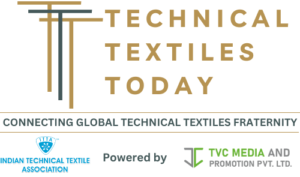Fresh food packaging plays an essential role in preserving the freshness, flavor, and safety of perishable goods such as fruits, vegetables, dairy, meat, and seafood. As consumers become increasingly conscious of food safety and environmental sustainability, packaging producers are rapidly transitioning to eco-friendly, recyclable, and biodegradable materials that support global sustainability objectives.
The industry’s outlook remains robust, with rising demand for innovative and sustainable packaging that safeguards food integrity while minimizing waste. Fact.MR’s latest analysis reveals that the global market will expand steadily, reaching USD 289 billion by 2035, driven by major technological advancements and sustainability mandates.
Key Market Drivers
1. Growing Emphasis on Food Safety and Quality:
The need to maintain product integrity and prevent contamination has accelerated the use of advanced packaging technologies such as Modified Atmosphere Packaging (MAP), vacuum sealing, and intelligent packaging, which extend shelf life and retain nutritional value.
2. Sustainability as a Strategic Imperative:
Increasing environmental awareness among consumers and regulators is prompting a shift from conventional plastics to paper-based, recyclable, and compostable materials. This transition aligns with corporate sustainability commitments and circular economy goals.
3. Rise in E-commerce and Food Delivery Services:
With the expansion of online grocery shopping and food delivery platforms, there is a growing need for packaging that is durable, temperature-resistant, and eco-friendly, ensuring safe and efficient last-mile delivery.
4. Technological Innovations in Packaging:
Continuous developments in active packaging films, antimicrobial coatings, and nanotechnology-based barriers are enhancing the efficiency, safety, and sustainability of modern food packaging.
Regional Insights
North America continues to lead the global market, supported by a mature food processing industry and widespread adoption of sustainable packaging. Europe closely follows, driven by stringent environmental regulations and policies promoting circular economy principles, particularly in Germany, France, and the U.K.
Meanwhile, Asia Pacific is expected to experience the fastest growth through 2035, fueled by urbanization, increasing disposable incomes, and a rapidly evolving retail infrastructure across China, India, and Japan. The region’s manufacturing strength is also accelerating innovation in eco-friendly packaging solutions.
Competitive Landscape
The market remains moderately consolidated, with key players investing in R&D, partnerships, and sustainable material innovations. Leading companies such as COVERIS, Pactiv, Amcor, Bemis Company, Sealed Air, Smurfit Kappa Group, Anchor Packaging, BALL, Berry Plastics Group, and Interflex Group are focusing on biodegradable polymers, lightweight materials, and advanced printing technologies to meet shifting consumer and regulatory expectations.
Recent Developments
- July 2025: Dow introduced INNATE™ TF 220 Precision Packaging Resin, a recyclable BOPE material that enhances strength, efficiency, and visual appeal. Partnering with Liby (China), Dow integrated 10% post-consumer recycled plastic into Liby’s “Floral Era” detergent packaging.
- June 2025: ICAR-CCRI and VNIT Nagpur signed an MoU to create biodegradable packaging from sweet orange peel waste. The initiative integrates citrus bioactive compounds into chitosan-alginate biopolymer matrices, promoting a bio-based circular economy in food packaging.
Future Outlook
The next decade promises a transformational phase for the fresh food packaging market as sustainability, smart technology, and circular design reshape the industry. Companies prioritizing eco-friendly materials, digital integration, and efficient logistics will gain a competitive edge.
As sustainability becomes the new standard, the future of fresh food packaging will be defined by innovation, transparency, and environmental responsibility, paving the way for a greener global marketplace.
